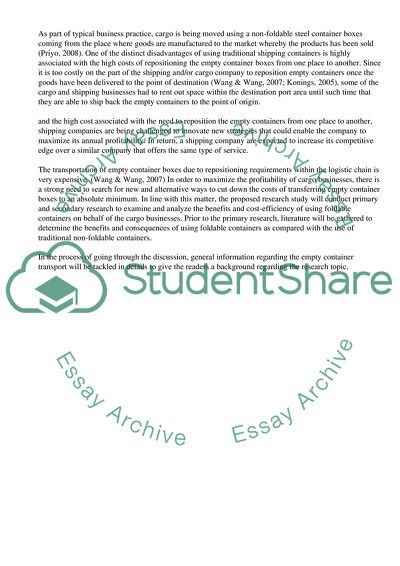Cite this document
(Repositioning of Empty Containers Is a Highly Expensive Business How Research Proposal, n.d.)
Repositioning of Empty Containers Is a Highly Expensive Business How Research Proposal. https://studentshare.org/business/1723034-repositioning-of-empty-containers-is-a-highly-expensive-buisenss-how-can-a-foldable-container-cut-down-costs-of-empty-transport
Repositioning of Empty Containers Is a Highly Expensive Business How Research Proposal. https://studentshare.org/business/1723034-repositioning-of-empty-containers-is-a-highly-expensive-buisenss-how-can-a-foldable-container-cut-down-costs-of-empty-transport
(Repositioning of Empty Containers Is a Highly Expensive Business How Research Proposal)
Repositioning of Empty Containers Is a Highly Expensive Business How Research Proposal. https://studentshare.org/business/1723034-repositioning-of-empty-containers-is-a-highly-expensive-buisenss-how-can-a-foldable-container-cut-down-costs-of-empty-transport.
Repositioning of Empty Containers Is a Highly Expensive Business How Research Proposal. https://studentshare.org/business/1723034-repositioning-of-empty-containers-is-a-highly-expensive-buisenss-how-can-a-foldable-container-cut-down-costs-of-empty-transport.
“Repositioning of Empty Containers Is a Highly Expensive Business How Research Proposal”. https://studentshare.org/business/1723034-repositioning-of-empty-containers-is-a-highly-expensive-buisenss-how-can-a-foldable-container-cut-down-costs-of-empty-transport.


